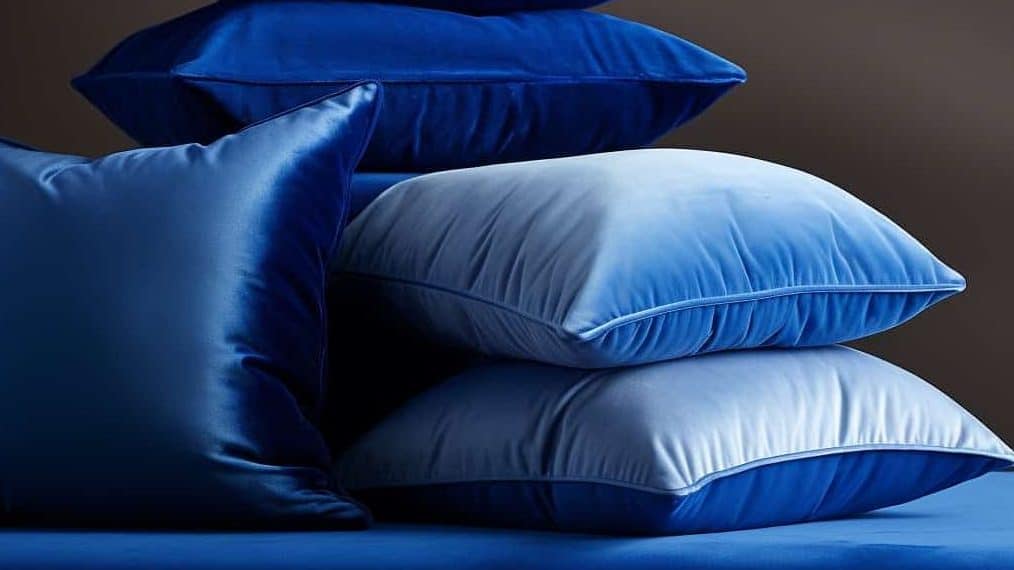Cushion the Blow: Your Ultimate Guide to New Couch Pillows

We independently select everything we recommend. When you buy through our links, we may earn a commission.
Table of Contents
The experts at Couch.com have compiled the ultimate guide to how to snuggle new couch pillows. From finding the perfect fill material to creative ways to add extra softness, this article will help you turn your couch into a cozy oasis. So, grab a seat and get ready to add a touch of comfort to your living room!
Will couch cushions soften?
Yes, couch cushions can soften over time. It's like breaking in a new pair of shoes, except comfier! Here's what you need to know:
- Quality matters: Cushions made of high-quality foam or the softest down have a secret agenda—they love to get cozier with age. With each sit, they slowly but surely soften, like a warm hug from an old friend. It can take some time but we usually like to say that foam cushions, for instance, will break in about 15-25% over the first 100 uses.
- Body language: Your cushions are like the best therapists, learning your body language over time. The more you lounge and Netflix-binge, the more they mold themselves to your unique shape. It's like a customized throne of comfort.
- Fluff and flip: To turbocharge the softening process, be a diligent fluffer and flipper. Regularly fluffing and rotating your cushions is like giving them a spa day; it ensures even wear and a symphony of softness that you can sink into. Lastly, you won't have to worry about couch cushion replacements!
How long does it take couch cushions to soften?
The time it takes for couch cushions to soften can vary, but here are some general guidelines to keep in mind:
- Softness evolution: Just like a fine wine, your sofa gets better with age. Additionally, with regular use, you'll start noticing those cushions getting a tad softer within a few weeks or months. It's like your sofa's way of saying, "I've got your back, quite literally!"
- The filling factor: What's inside matters, folks! But, the type and quality of cushion filling play a starring role in the softening process. Whether it's high-density foam, feather-filled, or memory foam—each has its own softening tale to tell.
- Couch companionship: Think of your gray sectional couch as a best friend. Also, as you spend more time together, the better it understands your comfort quirks. So, it's like a magical adaptation; the sofa molds itself to your snuggle style over time.
Are new sofas uncomfortable?
Not necessarily! While new sofas may initially feel a bit firm, they don't have to be uncomfortable. Here's why:
- Subjective comfort: Sofa comfort is a bit like your favorite ice cream flavor—it's all subjective. And, what's cozy for your friend might not tickle your fancy. So, feel free to be the sofa critique you were born to be.
- Firm and fabulous: Some folks are all about that firm feel. Naturally, it's like a sturdy handshake from your loveseat sleeper sofa, providing excellent back and spine support. If you're one of these aficionados, revel in that robust coziness.
- Customized comfort: If your new sofa is throwing you off your comfort game, don't fret! Add extra cushions, experiment with replacement foam for couch cushions, or go for a sofa with removable seat cushions. Moreover, it's like turning your seating into a personal comfort playground.
How can I make my couch cushions softer?
If you want to give that Rooms To Go sectional couch cushions an extra touch of softness, try these tips:
- Fluff it up: Regularly show those cushions some love by giving them a good fluff and rotation. Next, it's like a spa day for your sofa, evening out wear and tear and keeping things comfy.
- Cushion couture: Also, if you're yearning for a bit more plushness, layer on some padding or a couch covers with cushions. It's like adding a fancy feather boa to your sofa - instant luxury.
- Cushion makeover: If your cushions are feeling a bit down in the dumps, consider a makeover. Therefore, cushion toppers or swapping out the foam inserts for a softer fill material can transform your seating into a snuggle sanctuary.
Does high-density foam get softer over time?
While high-density foam is known for its durability, it can still become softer over time, albeit at a slower rate compared to lower density foams. So, here's what to expect:
- Stellar support: High-density foam is like that dependable friend who always has your back. It's designed to provide excellent support, keeping your posture in check and your spine happy for the long haul.
- Shape-shifting softness: While high-density foam starts off firm and supportive, it's not a rigid grump. With regular use, it does a bit of a softening tango and becomes more in tune with your body's curves. It's like a custom-made suit but for your behind.
- Subtle softening: Now, don't expect a dramatic transformation here. High-density foam is the master of understatement. Also, the softening process is a bit like aging fine wine; it happens gradually and subtly, ensuring your seating remains comfy without becoming a marshmallow. That all being said, you can expect a 15-25% softening during the initial break in period (timing will vary based on use).
It's all about support, a touch of softness, and the art of aging gracefully, one Netflix binge at a time.

